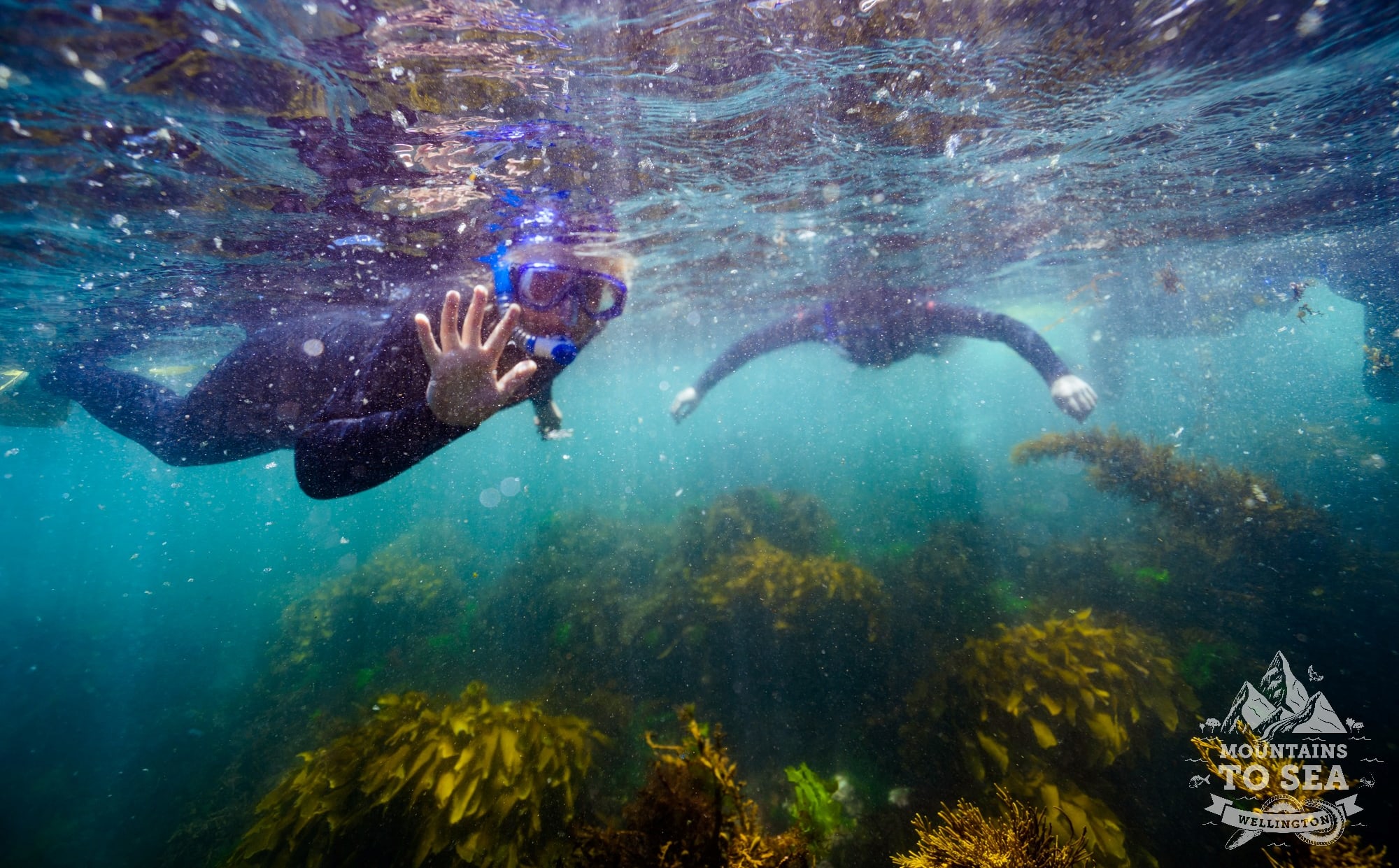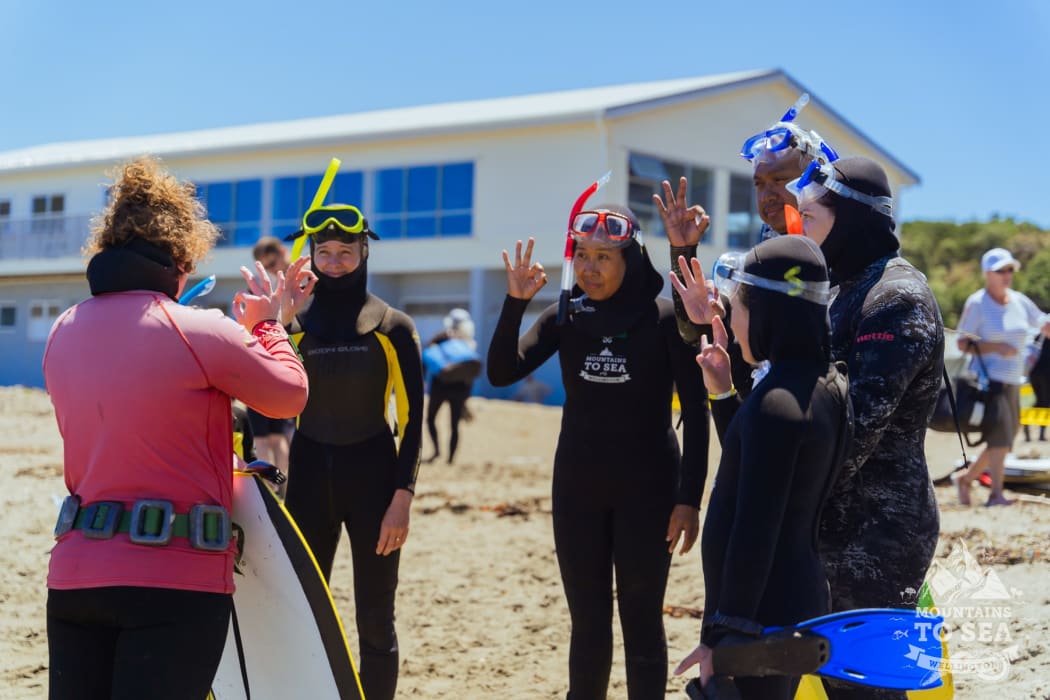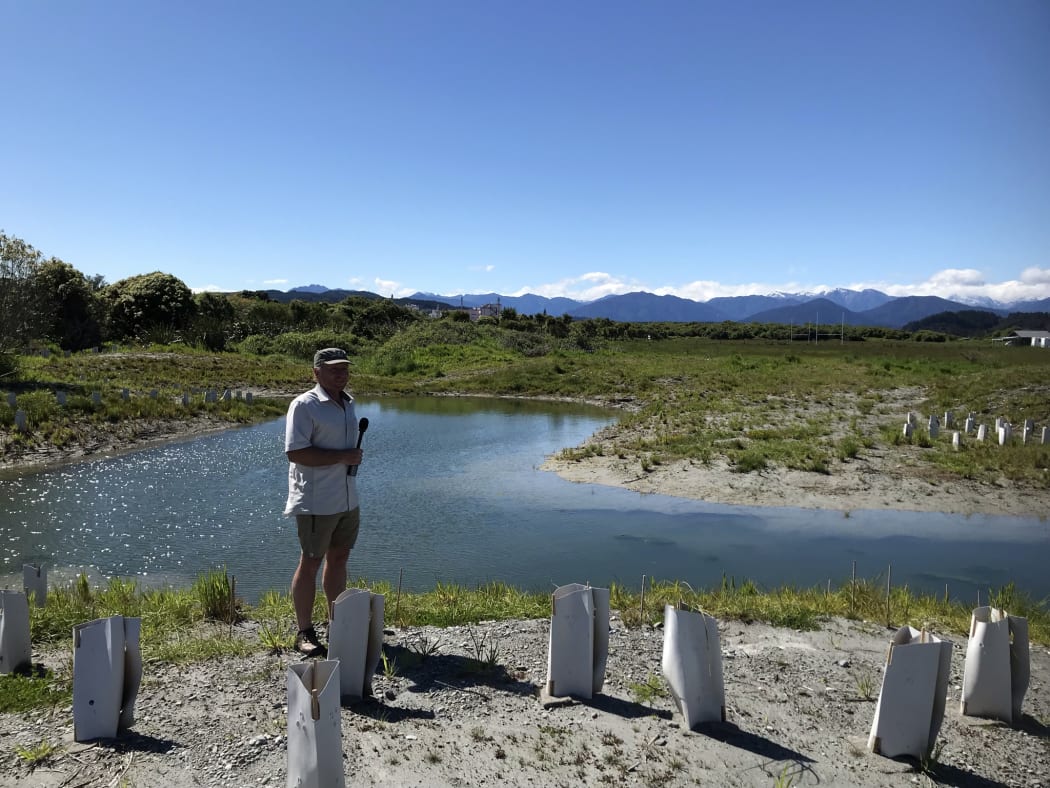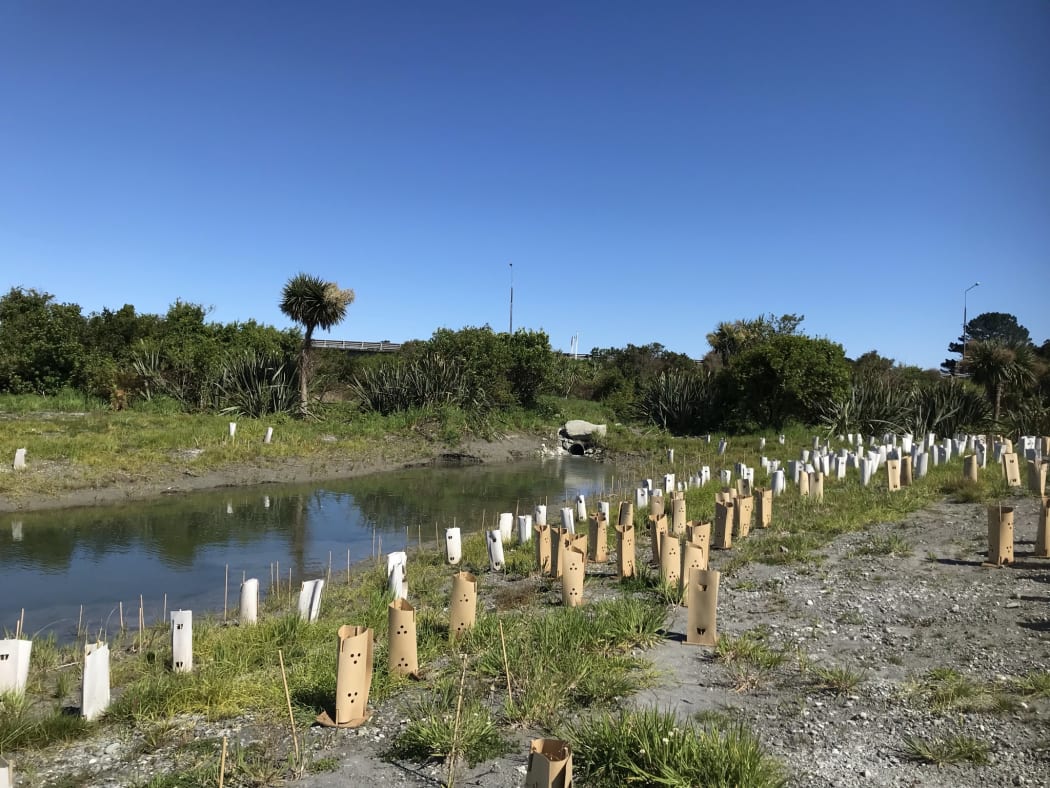We know humans benefit when biodiversity flourishes. This week, Claire Concannon brings us two stories about providing sanctuary for fish, and how local communities also gain from these spaces.

Snorkeler at the community day at Taputeranga Marine Reserve Photo: Kristine Zipfel
Follow Our Changing World on Apple Podcasts, Spotify, Stitcher, iHeartRADIO, Google Podcasts, RadioPublic or wherever you listen to your podcasts.
Marine Reserve Sightseeing
Marine reserves are areas in the ocean completely protected from sea surface to seafloor - safe spaces for marine life to flourish. But, compared to a stroll through a protected area of bush or wetland, it’s a bit harder to notice wildlife returning.
The Mountains to Sea Wellington group acts as ‘Tinder for nature’ - connecting people and te taiao. Some of their summer activities include community snorkel days, a free opportunity for local Wellingtonians to get to know the underwater wildlife in their backyards.
After taking part in one of the snorkel events at Island Bay in Wellington, Claire sits down with executive director Zoe Studd to find out more about the work of the group, the community snorkel days, and the changes she has seen after 14 years of the Taputeranga Marine Reserve.

A snorkel group gets ready to go in the water Photo: Kristine Zipfel
Making Space for Inanga
New Zealand’s native migratory freshwater fish are not having a good time.
The inanga's habitat is being destroyed as they also suffer due to poor water quality, dams and culverts block their way, they get eaten by introduced fish, and each year their juveniles are fished as whitebait. Unsurprisingly, their numbers are in decline.

Tim Shaw at the second, newly planted channel at Wadeson Island. Photo: RNZ / Claire Concannon
The West Coast sustainable wild whitebait fisheries project aims to help the threatened whitebait species (inanga, kōaro, and the giant, banded and short jaw kōkopu), by providing more and better habitats for them along the South Island’s West Coast.
Having received Mahi mō te Taiao/Jobs for Nature funding, the project, led by the West Coast Regional Council, is working with Conservation Volunteers New Zealand and the Department of Conservation to create a whitebait sanctuary on an 18-hectare site at Wadeson Island just outside Hokitika. In addition, fish passage assessment, weeding and fencing will take place on rivers and streams along the coast.

New plants along the channel at Wadeson Island Photo: RNZ / Claire Concannon
The West Coast sustainable wild whitebait fisheries project team involves representatives from: DOC, University of Canterbury, West Coast Regional Council, Ngāti Waewae, Te Rūnanga o Maakawhio, West Coast Whitebaiters Association, West Coast Conservation Board and commercial whitebaiters.
To learn more:
- Listen to this Our Changing World episode from 2008 celebrating the opening of the Taputeranga Marine Reserve.
- Learn more about inanga’s swimming abilities in this episode and find out about a research study into fish passage design on the West Coast from this recent episode.


